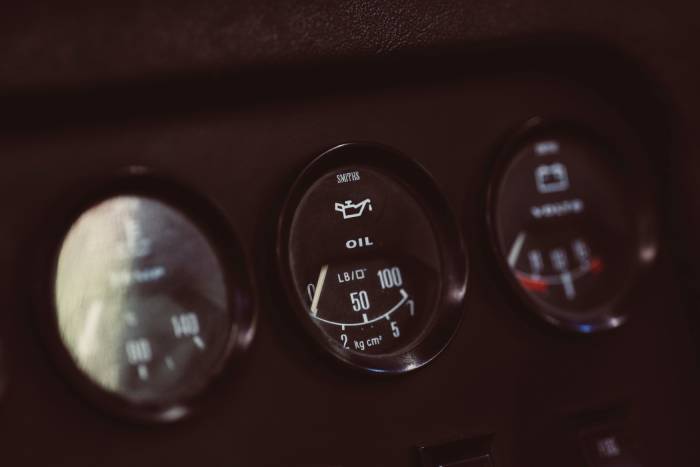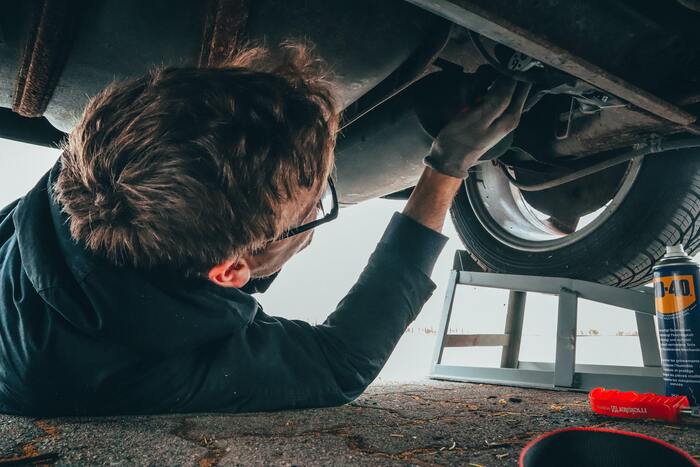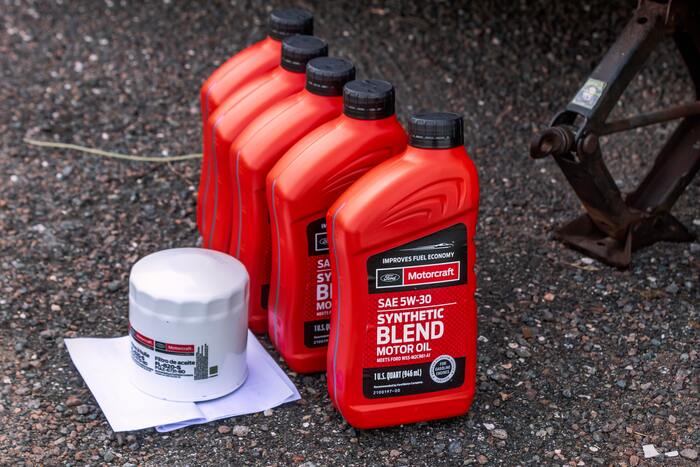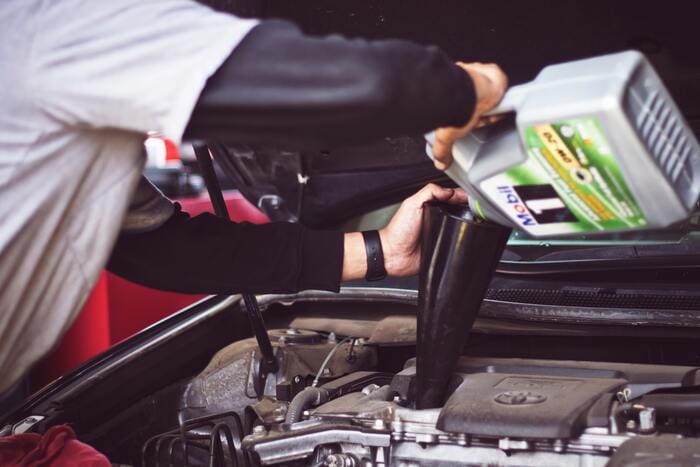We’ve all been there. One minute, you’re driving to pick up a coffee. The next minute, you see that dreaded little light. It’s your oil change indicator. And you wonder, why didn’t you learn how to change your oil in college?
Fortunately, this task is way easier than Chem 101. All you need is the check list below and a little elbow grease.
And oil. That’s actually pretty crucial.
Car Oil 101
Just like wheels, your car needs oil to run properly. According to automotive educator Chaya Milchtein, “Engine oil is the lifeblood of a car. And changing it regularly, combined with a quality mechanic that you trust? That’s the foundation of a car that has a long life ahead of it.”

A self-proclaimed mechanic interpreter, Milchtein helps women and members of the LGBTQTIA community learn about cars and car maintenance. So roll up your neon pink, metallic puffy sleeves and follow Milchtein’s lead.
What You Need to Change Your Car Oil
Before you dive into this DIY, you might need to go shopping for some basics – and not the little black dress kind.
To change your oil, you’ll need:
- Oil filter pliers
- Oil drain pan
- Funnel
- A jack, jack stands, or ramps to lift up your car if your car is too low to the ground for you to crawl under
- Oil
- Oil filter
- Your car’s owner manual
To find out how much oil and what type of oil you’ll need, consult that handy owner’s manual. You know, that thing buried under Taco Bell sauce packets in your glove compartment. It will tell you what the viscosity the oil should be.
Whether or not you use synthetic or conventional oil depends on your car. High performance models take synthetic oil, for instance, so make sure to get that for your Lambo. Or your 30 year old Dodge Dart.
How to Change Your Oil
1. Prepare Your Car
Secure your vehicle on a ramp or jack if needed. Then, grab a drain pan, and locate the drain plug and the oil filter. These should be fairly close together on the bottom of your car.
The drain plug will be a nut (likely six-sided) that’s plugged into a container on the bottom of the car. Position the drain pan under the plug so it can catch the used oil. You want to change your car’s oil, not be covered in it, right?
As for the oil filter, this will look like a cylinder. You don’t need to do anything with it yet, just make sure you know where it is.
Finally, make sure the car is cool so the oil can settle. Even if you were just passing through the drive-through, let your car sit for a moment. When you’re hot French fries are eaten (or soggy), you’re good to go to step #2.
2. Drain the Oil
Using a wrench, remove the drain plug and let the oil flow out. Hopefully into the pan that you set out. Let it flow for about five minutes, or until the stream slows to a trickle.
Then, tighten the drain plug to finish this section. You’re just flying through the steps!
3. Change the Oil Filter
If Milchtein says that your oil is the lifeblood of the car, then the oil filter is the liver and kidneys. It helps clean out any contaminants in your car’s oil that could damage the engine. If only that existed for our actual liver and tequila.
Place the drain pan under the filter and get ready to make a little bit of a mess. As you unscrew the filter, oil will come spilling out. Take a rag to wipe down the area.
Get out your shiny new oil filter, add a bit o’ oil to lube up the new filter’s o-ring. Then, tighten the filter onto your car. You’ve done the hardest parts!
As for the oil pan, set it aside so you can dispose of it properly according to your neighborhood’s waste management guidelines. Your local auto shop or mechanic can also give you guidance about how to safely manage your old car oil.
4. Add Oil
Here comes the most obvious part. Your car is out of oil, so it’s time to pour some new oil in! To do this, you’ll need to come out from under your car.
Lift up the car’s hood and find your oil cap. (That owner’s manual can help if you can’t find it.) Take your new bottle(s) of oil and slowly pour them into the reservoir.
Pour for several seconds, then insert your dipstick. This is that long strip that helps you see how much oil is in your car. You want the oil level to be at or near the top marking of the dipstick.
And get your head out of the gutter – we said that changing oil can be dirty, but not in that kind of way.
5. Check the Oil and Take the Car off the Ramp or Jack
Before you take a road trip to tell everyone about your new skill, you’ll need to check to make sure everything went smoothly. We’re not trying to micromanage. You just don’t want to be on the road and notice that the oil is leaking because the drain plug was loose.
Double and triple-check to make sure that your filter and drain plug are secure. Then, start the engine to help that oil get nice and circulated in your car.
After a few moments, turn the engine off and grab that dipstick again. Check your oil levels under your hood to make sure it’s at the correct level.
If everything is looking good, then you can take your car off the ramp or the jack stands.
6. Reset the Oil-Life Monitoring System
Remember that pesky light on your dashboard? It’s actually pretty useful to let you know when your oil needs to be changed again. Consult that handy user’s manual and reset the system according to instructions.
All done? Cue up your best playlist and start that road trip!
When Should I Change My Oil?
Every car is different, but Milchtein explains that conventional oil should usually be changed every three months or three thousand miles, whichever comes first. If you’re using synthetic oil, it can be as often as every 5,000 miles, or as long as every 10,000 miles.
When in doubt, use a dipstick to check your oil levels. Or, keep an eye out for that little light you just reset.
- These 13 Pumpkin Beers Are a Fall Festival in a Glass - October 5, 2022
- Car Tips 101: How to Change Your Car’s Oil At Home - February 28, 2022
- Everything You Need to Know About The Medusa Piercing - December 20, 2021














Leave a Comment